87 questionable Covid calls set to be overlooked by pandemic response inquiry
An inquiry into the nation’s Covid response — that won't probe unilateral state decisions like lockdowns — has been slammed as pointless. Here’s 87 questionable calls, most by Dan Andrews.
A panel set to probe Australia’s Covid response — but which won't look at unilateral state decisions like lockdowns and border closures — has been slammed as pointless by opposition leader Peter Dutton.
Prime Minister Anthony Albanese is facing backlash for the limited scope of the independent pandemic response inquiry, with the opposition dismissing it as “a complete waste of time”.
Mr Albanese has said the probe — headed by epidemiologist professor Catherine Bennett, health economist Dr Angela Jackson, and the former director general of the NSW health department Robyn Kruk — will be tasked with assessing what worked and what didn’t work in Australia’s response to the Covid pandemic.
But it appears it’s set to overlook a lot — particularly in long locked-down Victoria.
Here are some of many harsh measures, surprise calls, actions, inconsistencies, comments and calls from Premier Dan Andrews in Victoria that Herald Sun readers took issue with during the pandemic, and which may now escape scrutiny. There were also more than a few blunders made along the way.
But not all the objectionable Covid calls were those of Premier Andrews, and Victorians also had axes to grind with the Federal Government and some other state responses — on the very rare occasions they were able to travel to them.

Readers’ top ten Covid gripes
1. The CovidSafe app which cost $21m and appeared to have nationally identified just two positive cases.
2. The crude cutting in half of communities by “ring of steel” measures and border closures.
3. Premier Dan Andrews’ demand that Victorians do not “get on the beers”.
4. People forced to resort to carrying empty coffee cups so that they didn’t need to wear a mask.
5. The essential worker childcare confusion. Did one or both parents have to be “essential” for childcare to be allowed?
6. The stultifying array of categories of essential and non-essential workplaces that at times meant that churches were closed but Bunnings and brothels were open.
7. Lockdowns triggered by threats – such as coronavirus fragments detected in wastewater tests – later shown to be misleading.
8. Chief health officer Brett Sutton’s description of the Kappa variant as a “beast” – did this qualify the subsequent Delta variant as a “super freaky monster beast”?
9. The omnipresence and folklore around the dreaded North Face jacket.
10. The twee celebration, and accompanying photo-ops, of so-called “doughnut days”.
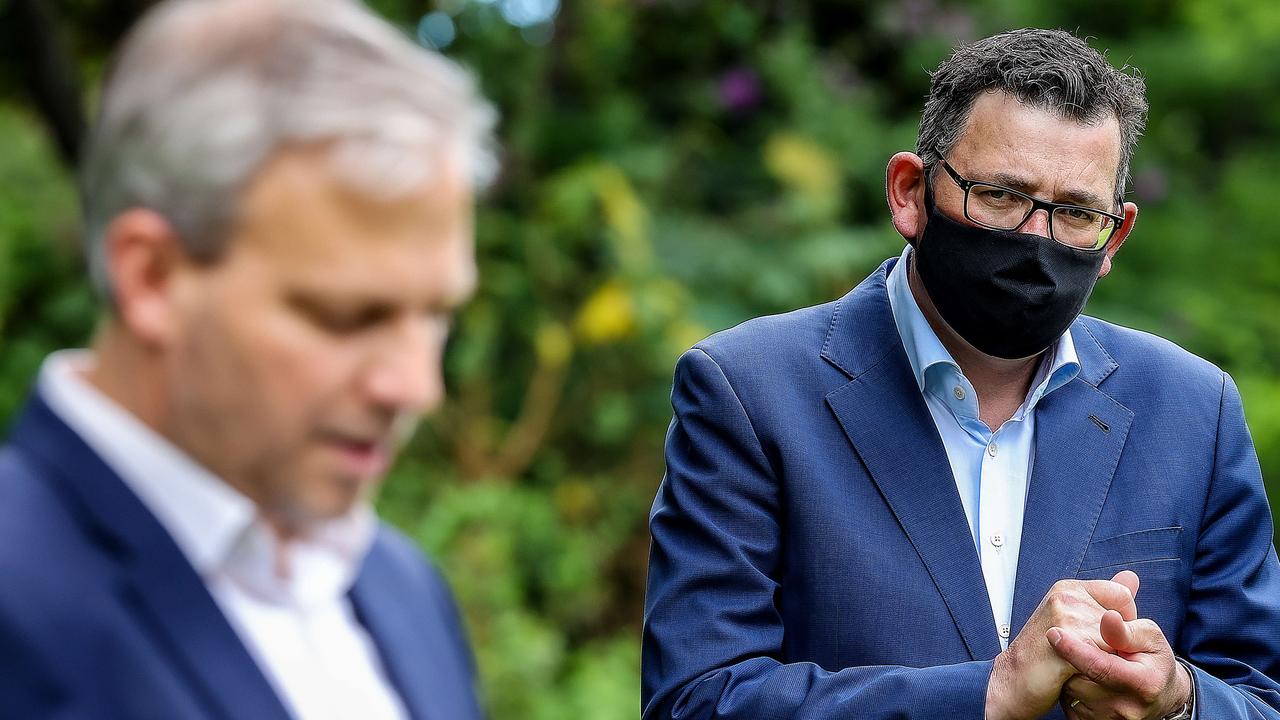
Another 77 examples of overreach
1. An “abundance of caution is never a bad thing,” Premier Daniel Andrews said. After six lockdowns over 262 days, readers thought it was.
2. The promise of a “short, sharp” lockdown which became months-long.
3. When walking down the street was permissible “only with a valid reason”.
4. Elderly mothers being separated from their children and funerals being barred from most loved ones.
5. The terminally ill being deprived of final farewells.
6. The debasement of “the science”, which was not based solely on evidence-based facts but instead confected on guesses, assumptions, an abiding lack of trust and political expediency.
7. The language of fearmongering, a constant over almost two years. The virus does “not discriminate” and the virus is a “wicked enemy” being two.
8. Bans on golf and fishing – even by yourself – were mostly adhered to, even by those who rejected the policies. “No trip to the golf course is worth someone’s life,” Premier Dan Andrews explained. Yet no trip to the golf course would have risked anyone’s life, either.
9. Allowing Black Lives Matter protesters to gather in June, 2020, even though the rest of the state was largely unable to attend funerals and/or weddings.
10. The willingness to fine Victorians for choices that would otherwise have been normal.
11. The absurdly inflated penalty of fines. At first, they were $1650, then rose to $5000.
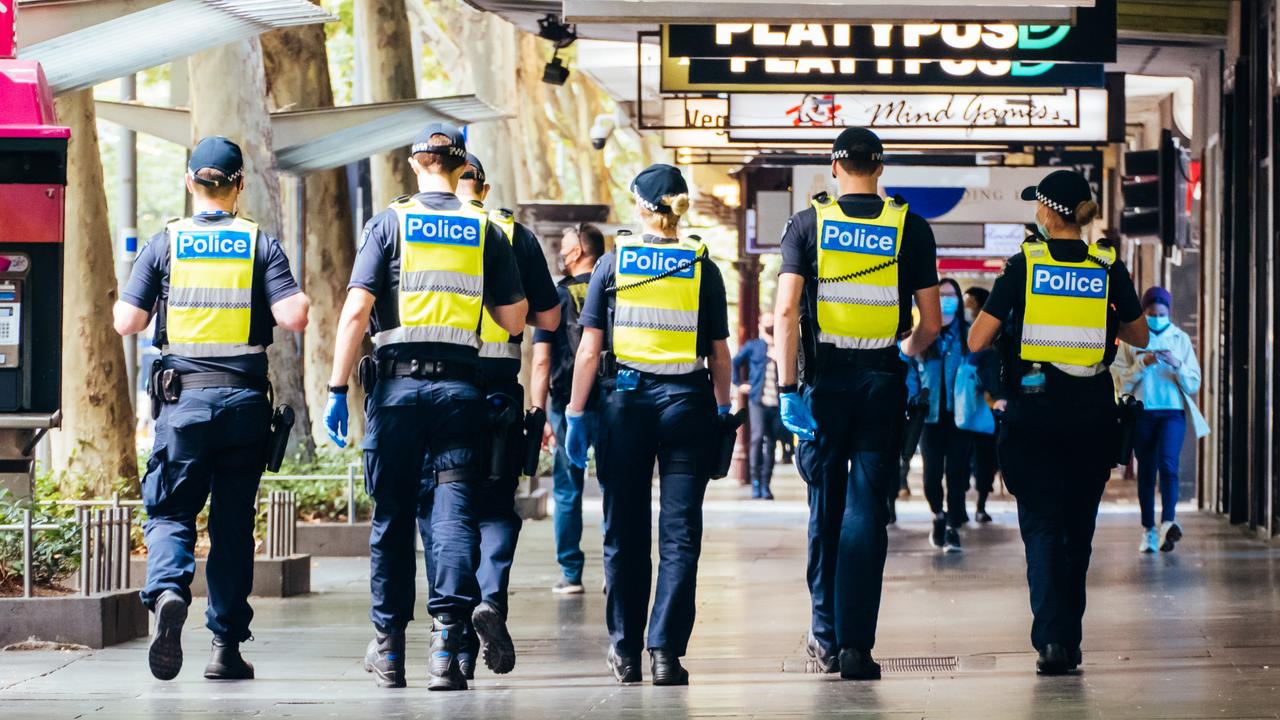
12. A ban on couples sleeping at each other’s houses. “That’s not work, that’s not care giving, that’s not medical care … it does not comply with the rules … ” Andrews said of the very short-lived policy, which became known as the “bonk ban”.
13. Old women being confronted by police on a park bench.
14. Police searching the shopping bag of a woman in the CBD.
15. The needlessly melodramatic arrest of pregnant mother Zoe Lee Buhler – with handcuffs, in her pink pyjamas at home – for posting about a lockdown protest.
16. A Greek funeral being interrupted when police entered the church to do a head check.
17. A learner driver being fined $1652 (later rescinded) for a lesson with her mum because the activity was deemed “non-essential”.
18. A delivery man being fined (later rescinded) for washing his car at an otherwise empty car wash at 1.15am
19. Victoria’s deputy chief health officer Annaliese van Diemen posting a tweet comparing Covid’s arrival to that of Captain Cook in 1770.
20. The first reckoning of the pandemic in Victoria being the spread of Covid through the use of largely untrained and unmanaged private security guards for the hotel quarantine of returned travellers.
21. Soldiers or police could guard arrivals housed in hotels, as they did in NSW and Queensland, after touching down from overseas. They did not, and more than 800 Victorians died needlessly.
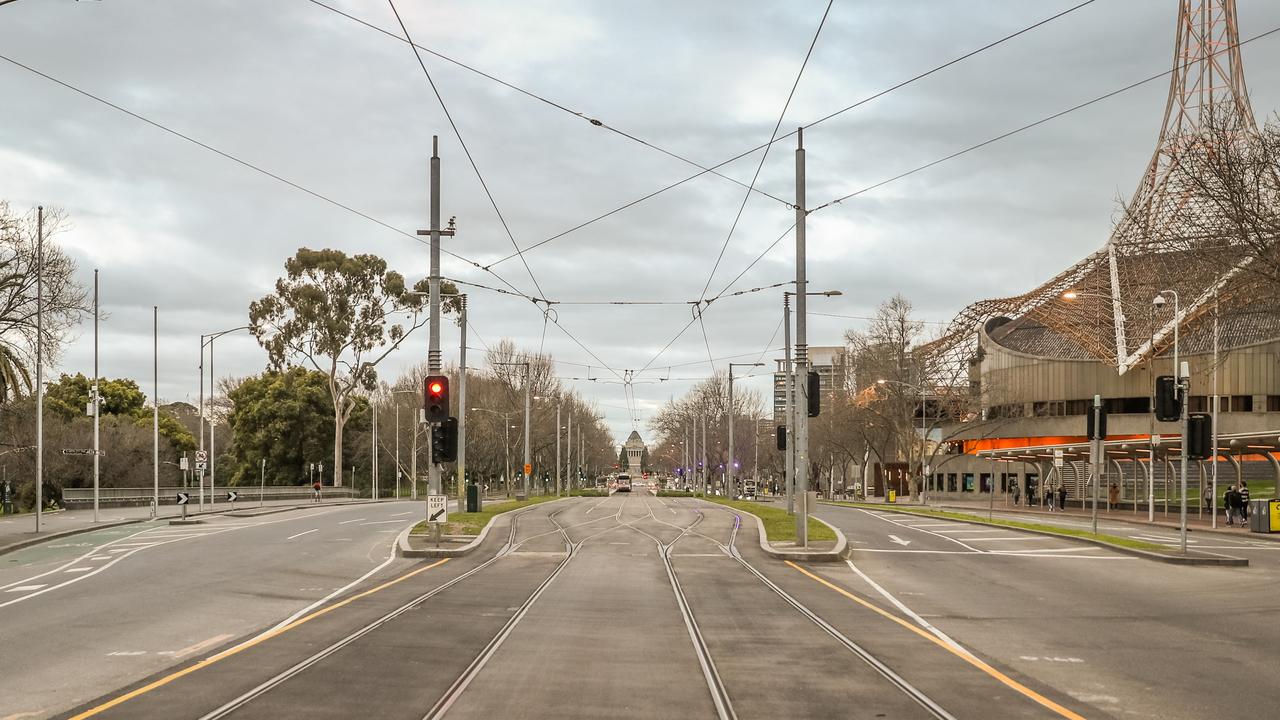
22. The first Covid case at St Basil’s Home for the Aged in Fawkner was July 9, 2020. As just one example of a failing sector under strain, it was thought to be another six days before the 100 or so residents – who mingled in the meantime – got tested.
23. Peter Fox, son of billionaire Lindsay, and his family being exempted from bans on Victorians travelling to Queensland in August, 2020 after he told the Queensland government he drove trucks.
24. A local council installing concrete roadblocks to confound skateboarders from gathering at a Hawthorn skate park. It followed other councils’ creative leads of dumping sand or tan bark to deter the mischievous fiends.
25. Anxious families huddling outside nursing homes, where some of their parents were getting infected, dehydrated and living their final moments soiled in their own filth. The system failed them.
26. A public servant speaking of an hour’s “equity and diversity” training for hotel quarantine staff, yet no training in the use of personal protective equipment.
27. Stories emerged of arrivals going on shopping expeditions and fraternising between rooms. Supposed sexual escapades were detailed.
28. Global Victoria, which organises aspects of the private security arrangements, applied “compassionate empathy” to the task, but forgot to apply logic or common sense.
29. Global Victoria makes an in-house video, which likened its pandemic response to a “massive inbound super trade mission”, and featured chief executive Gonul Serbest explaining how “really proud” the organisation felt about its work, which included hotel quarantine.
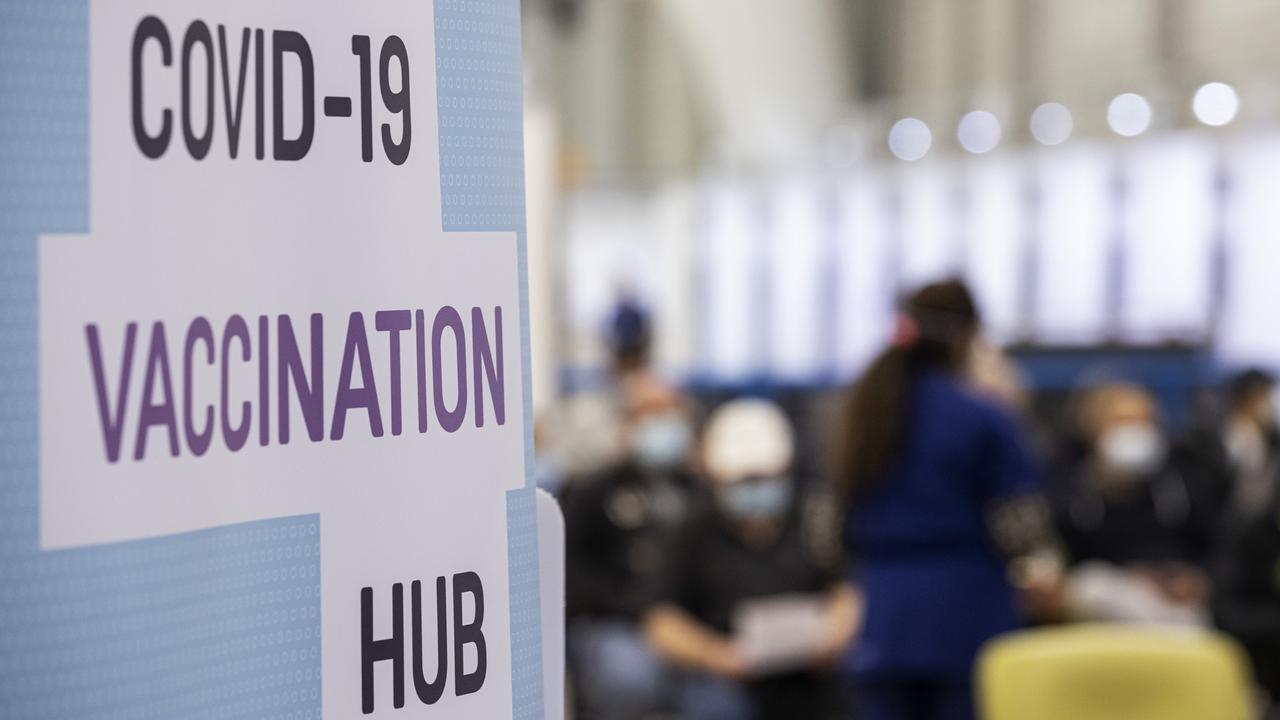
30. This smug ignorance symbolised the broader absence of care expressed by government ministers and their senior bureaucrats. As an inquiry later concluded, a “catastrophe waiting to happen”.
31. At the inquiry, headed by former judge Jennifer Coate, a succession of politicians and bureaucrats explained how they did not know or must have forgotten. No one was to blame, they collectively argued. The diabolic choice of private security was presented as a mystery in institutional osmosis.
32. Andrews spoke of “shitty choices” after engagement party footage depicted guests making fun of Covid laws against gatherings. Yet the “shittiest” choice of all was Victoria’s hotel quarantine program.
33. Andrews told the inquiry that Health Minister Jenny Mikakos was accountable for the failed program.
34. Former Department of Health and Human Services secretary Kym Peake said she did not brief Mikakos on aspects of the program.
35. Mikakos replied to Andrews’ suggestion that she would have been asked to resign if she had not already resigned by stating that Victorians “do not need another masterclass in political deflection from the Premier”.
36. The apology. Andrews said sorry, and he was accountable for mistakes made in the hotel quarantine program. But he wasn’t.
37. Andrews locked down 3000 residents in public housing towers in Flemington and North Melbourne without warning at 4pm on July 4, 2020.
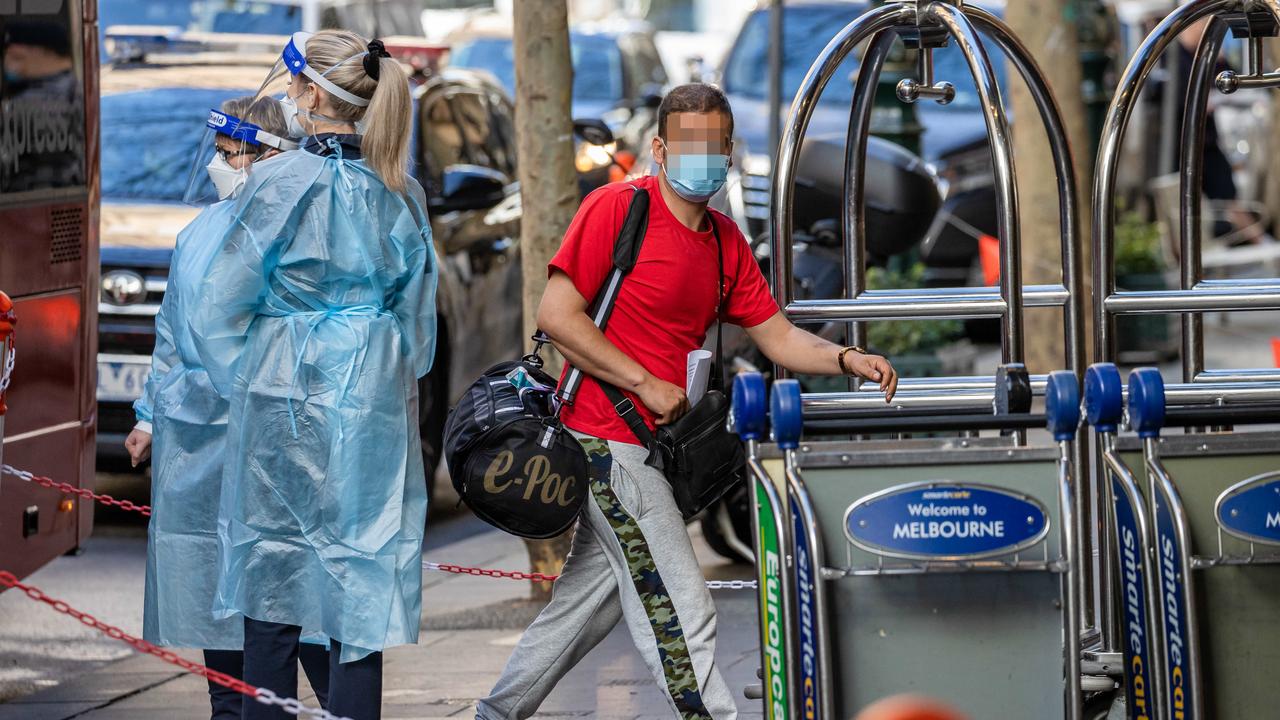
38. Police swarmed the sites, in scenes likened to an action movie bomb threat.
39. Vulnerable residents lacked food, medication, and any chance for the comforts that might have made their imprisonment more bearable.
40. “The rushed lockdown was not compatible with the residents’ human rights, including their right to humane treatment when deprived of liberty,” said a later report by Ombudsman Deborah Glass. “In my opinion … the action appeared to be contrary to the law.”
41. Contact tracing systems which relied on paper and fax communications, as if the past 30 years of technological revolution had passed Victoria by. The state belatedly moved to a digitised process months after other states applied far more advanced technology.
42. Ratcheting up the rhetoric, police chief commissioner Shane Patton said in July 2020 that police may use drones in lockdown suburbs to ensure that Melburnians are abiding by stay-at-home orders.
43. A Melbourne curfew is introduced on August 2, 2020, when 671 new daily cases were reported. Weddings were banned, exercise limited to an hour within 5km of home, and police patrolled. There was no evidence that such blanketed measures curbed the spread.
44. Police, on horseback and armed with shields and batons, arrested 74 so-called Freedom protesters and issued an estimated $200,000 in fines at Queen Victoria Market. “Protesting is stupid, protesting is selfish, and protesting is dangerous,” Andrews said afterwards, in neglecting to mention that under his government’s double standards, some protests demanded more punishment than others.
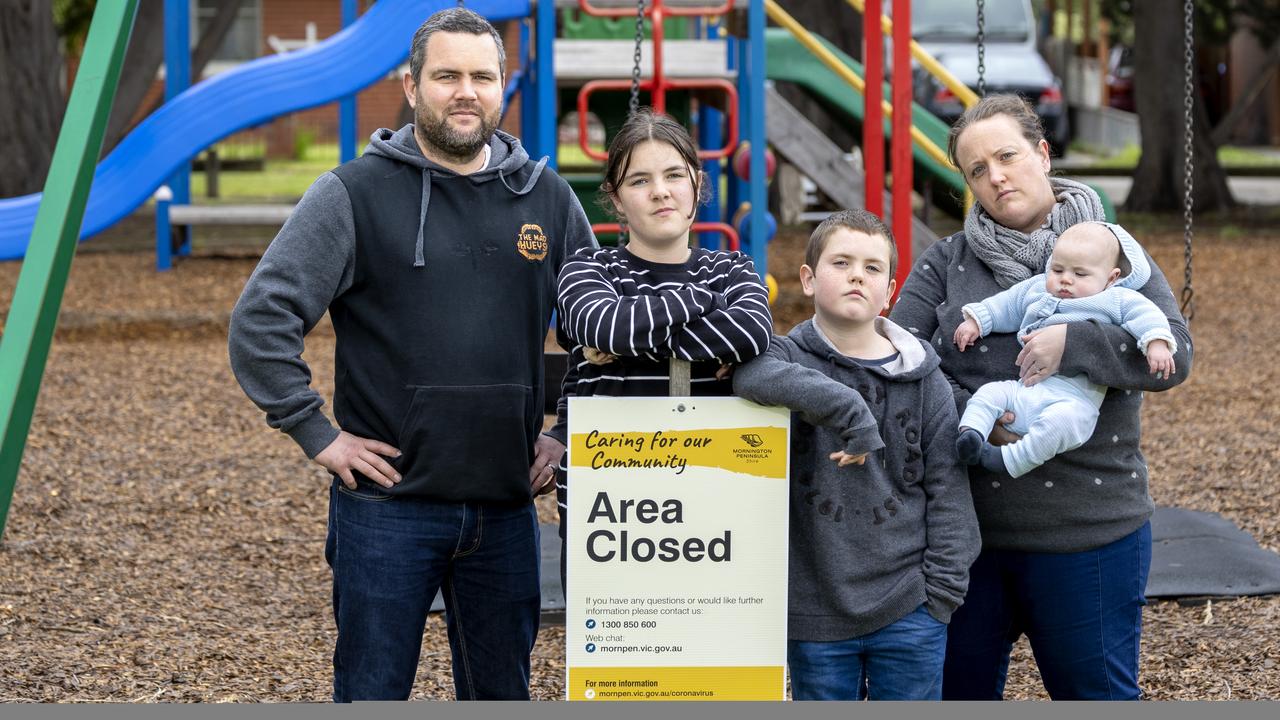
45. “Ultimately we’ll have to be, just as we always have been, guided by the data, the evidence, the numbers and the detailed analysis of those numbers,” Andrews said. Epidemiologist Catherine Bennett later described the so-called road map out of lockdown, which would go 111 days from July to October, 2020, as a “sledgehammer approach … when a hammer may have been just as effective”.
46. Andrews later announced one of the main reasons for curfews – to ease the job of police officers. Who was serving who?
47. Restrictions were to ease – but only when case numbers fell below five a day. The target was considered too low by some epidemiologists, and rightly led to questions about the need to shield antiquated contact tracing systems.
48. Being months behind other states in introducing a universal QR code system which could routinely link cases via a database.
49. A 2020 Melbourne Cup with an official attendance of zero. A 2021 Melbourne Cup with an official attendance of 10,000.
50. Victorians collectively being advised to not hug or kiss family and friends visiting from NSW, where there are outbreaks, for Christmas 2020.
51. Absurdly short notice to return to Victoria from NSW before the border closed on Jan 1, 2021. Loved ones were forced to separate from loved ones, and queues seven hours long reported at car checkpoints.
52. A patient in intensive care with Covid gets a call from a contact tracer – nine or more days after testing positive – to be told he has Covid.
53. This follows a claim of Premier Dan Andrews that the state’s contact tracing system was “gold standard” and that other states would seek to emulate it. The total number of states which go on follow the Victorian example? Zero.
54. Queensland Health asking people to wear a mask in the car – even if alone – because “a consistent approach keeps you safe”. How wearing a mask while alone will stave off Covid is not explained.
55. The “it’s not a race” rhetoric of the Morrison government was rightly condemned, over and over, as international figures from April, 2021 showed Australia’s rate at 2.1 vaccinations per 100 people – compared with Israel’s 115 vaccinations per 100, and behind rates in Rwanda, Bangladesh and Bolivia.
56. The “no exceptions” rule. When a poor boy drowned on school camp in Warrnambool in May, 2021, and almost no one could go to the funeral (despite AFL matches being played at the time), the state’s institutional stridency was, once again, revealed for its cruelty.
57. A few weeks later, Victoria’s then chief health officer Brett Sutton ignored his own 25km travel rule to attend a Canberra awards night – which other state counterparts chose to attend online.
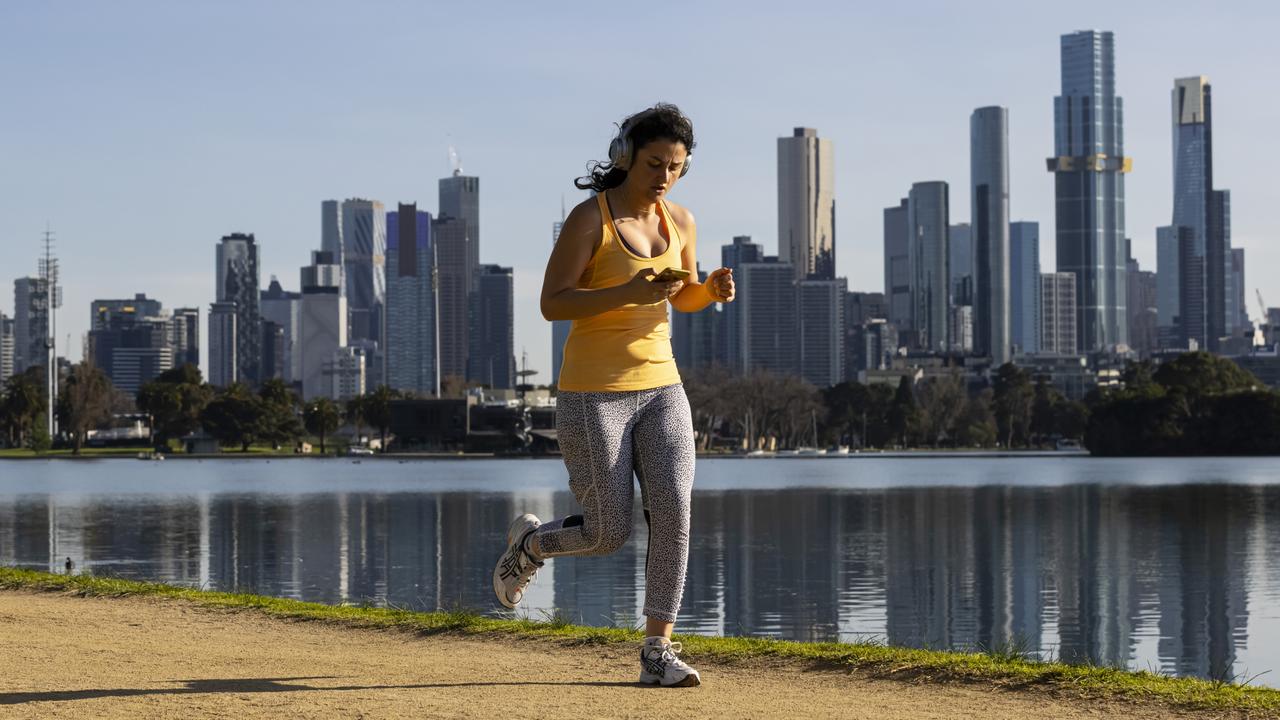
58. Victorians were given 12 hours to return to the state before the border closes with NSW in July, 2021. Many with compelling reasons, such as lack of proximity and/or terminally ill loved ones, could not meet this deadline. Of 33,000 subsequent exemption requests, Victoria’s health department approved only eight per cent. Many applications were not rejected; they simply went unassessed. Ombudsman Deborah Glass, in a later report, cites descriptors such as “inhumane”, “punitive”, “unjust outcomes” and “heartbreaking” to describe this process.
59. Another curfew is enacted in August, 2021, when there are 22 new daily cases. Lockdown is supposed to last two weeks, but is extended and lasts for 78 days.
60. The evidence is, once again, put aside when the Andrews government bans playground play in August, 2021. Former chief health officer Brett Sutton thought about the ban “long and hard”, he said, because playgrounds in lockdown are “one of the great escapes from home in a day”. So, he and the Andrews government banned them anyway, because naughty parents are reportedly chatting and drinking in such settings. “This spreads amongst kids and we can’t have the potential transmission sites open,” Andrews said, even though there is no evidence of virus spread – then or now – in playgrounds.
61. Police chief commissioner Shane Patton warned fines could result from police patrols of playgrounds, many of which were draped in warning tape.
62. The strident police line compels police association head Wayne Gatt to point out the obvious: “Police are now tasked with enforcing a curfew that no one has welcomed, and to prevent families from going to playgrounds that bring them joy.”
63. When the playground ban is, finally, dropped, two weeks later, limits remained. One parent, no eating or drinking. The Fun Police would not let go.
64. To this day, no evidence has been produced to support the ban. The obvious conclusion is that there was no scientific basis for such a cruel and misplaced measure.
65. Andrews never missed a chance to scare the worried. Even tennis player Nick Kyrgios was moved to protest when Andrews declared: “Sunday will be quite a nice day. At home. Otherwise it will be lots of Sundays spent in hospital. That’s the fact.”
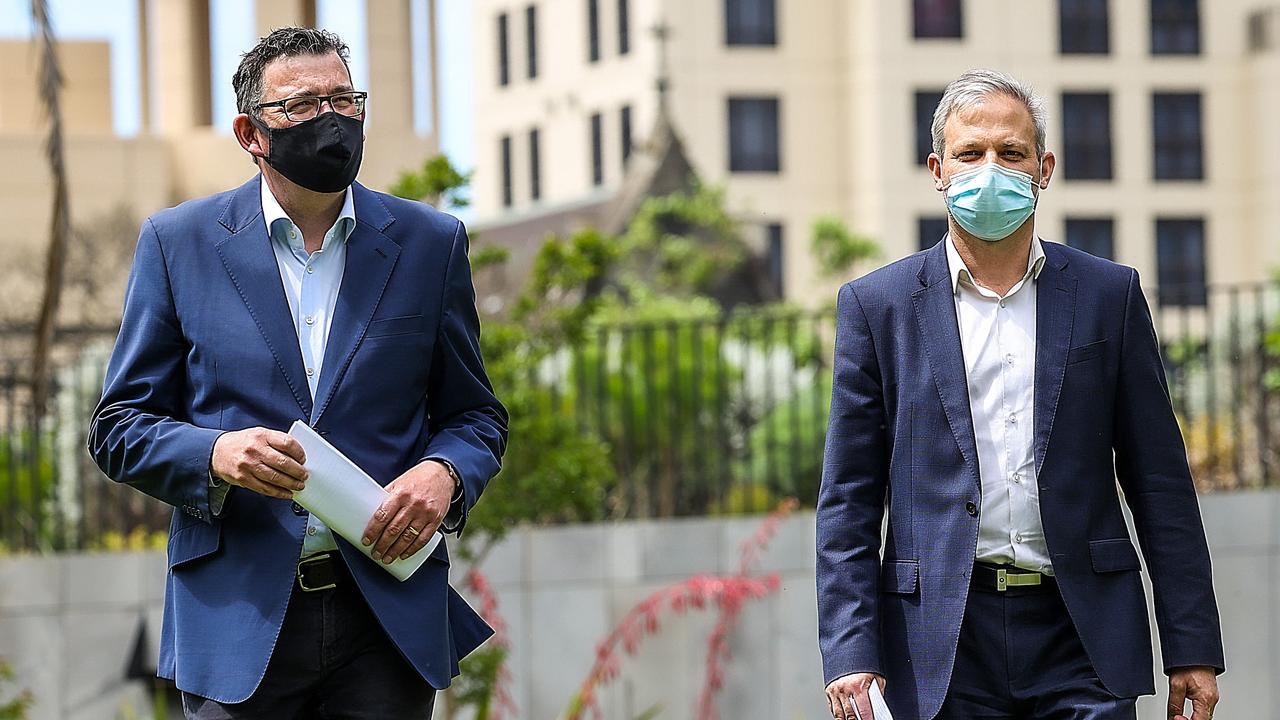
66. Andrews berated people watching a sunset on the Mornington Peninsula in August, 2021. “There’s a bunch of people down (at) the Rye Beach last night who thought the best thing to do was to watch the sunset,” he said. “I’m sure it was a beautiful sunset. But that’s not in the spirit or in the letter of these rules.”
67. The Victorian approach was based on a single ideal – zero cases. Ten cases a day were too many. The unachievable targets served to subject a city to the world’s longest lockdown.
68. Victoria dithered while NSW – a comparable population – dared. Few Victorians were abiding by all the edicts by September, 2021. Rules may be rules, but many Victorians had concluded that some of the rules were petty, unfair, and not health-based.
69. Picnics were allowed, again, so long as all five (maximum) picnickers were fully vaccinated. “We can’t literally have a situation where we are going park by park, picnic by picnic,” said Andrews, as if placating an imaginary demand for police oversight for such high-risk ventures.
70. Health Minister Martin Foley invited journalists to “take a chill pill” after NSW eased restrictions – at the time, Victoria was in its 257th day of lockdown.
71. Andrews conceded that the pursuit of zero cases was a folly (though not in these words), and that the singular goal of the past two years was ultimately unreachable. “I make two points: it can’t be much more than zero and, secondly, we are better off for having chased zero,” he says, finally. But were we?
72. Victoria nationally recorded the highest rises for Lifeline and Beyond Blue calls and hospital admissions for childhood disorders. It also recorded the highest death toll for the bulk of the pandemic. Anxiety and depression, as well as disorders, skyrocketed in part because of an ideological approach to near elimination.
73. Epidemiologist Bennett and former national deputy medical officer Nick Coatsworth spoke of the “interpretation of inconclusive evidence” as a Victorian “trademark”.
74. The thinking for odd rules, such as playground bans and curfews, was clouded. Requests for the public release of paperwork were contested by the Andrews government in courtrooms. “Not in the public interest” goes a courtroom argument, as if the reasoning for seemingly random, unjust and unprecedented policies to restrict freedom and movement is above scrutiny.
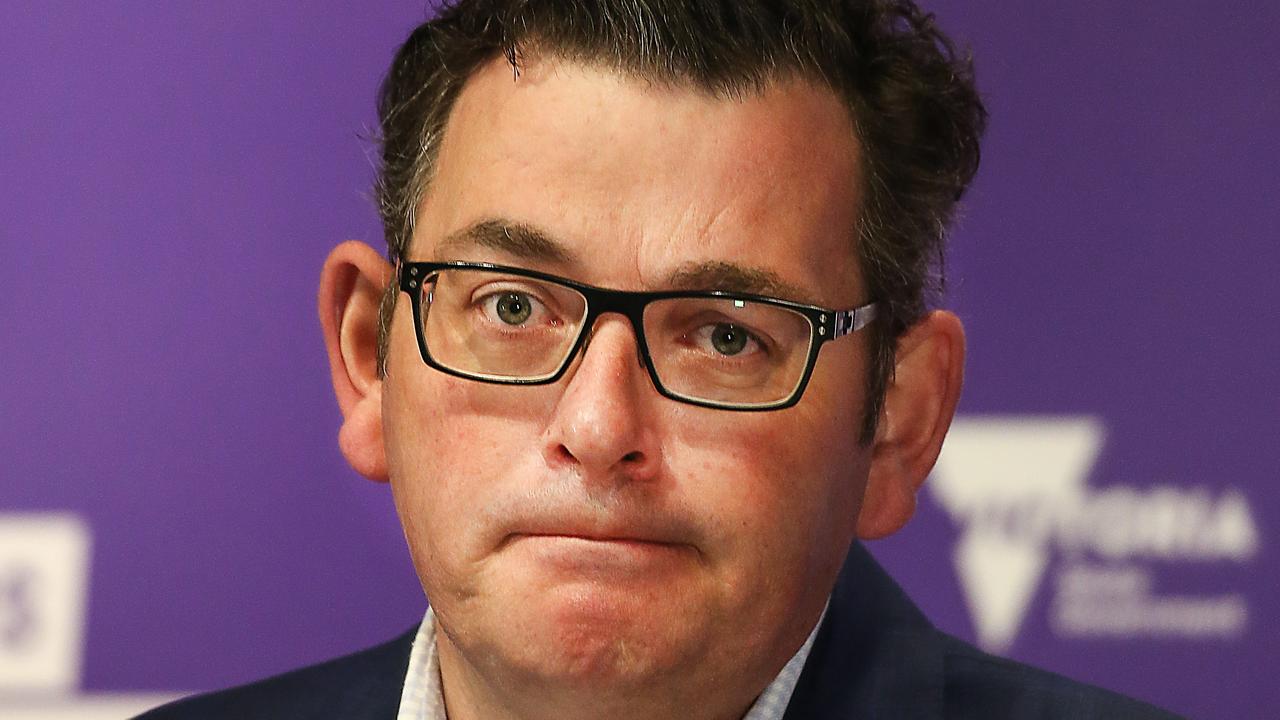
75. After waiting a week or more for results, thousands of Victorians returned an invalid PCR test in January, 2022, prompting the health department to blame “temporary backlogs”.
76. Although not perfect, Premier Daniel Andrews described Victoria’s pandemic response as a “triumph” in December, 2021. At the time, it wasn’t yet reported that former Australian chief medical officer Brendan Murphy had said Victoria was “buggering up the country”, or that he considered Victoria’s then chief health officer Brett Sutton to be “the most hawkish” of the state authorities. Andrews overlooked the world’s longest lockdown, the hotel quarantine debacle and Melbourne’s internationally rare status of banning playgrounds. He went on to say that “some people … just can’t find it in themselves to say ‘well done’.”
77. The $580m Centre for National Resilience – a purpose-built quarantine facility – closed after housing 2168 residents. Police Minister Anthony Carbines said the hub “served its purpose”, which it seems was to cost taxpayers about $267,000 per resident. Let’s say what no one else will: well done.




